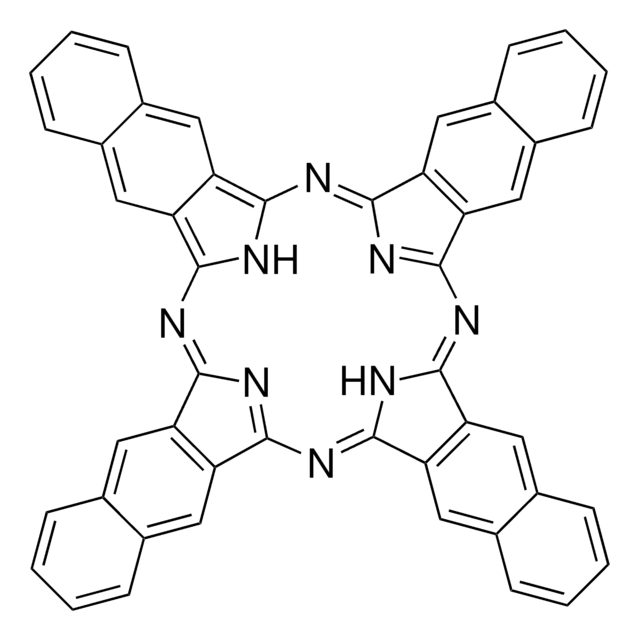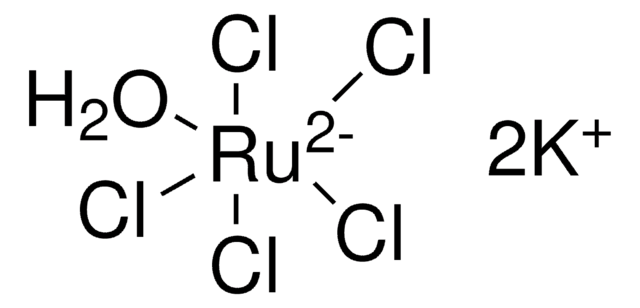Wichtige Dokumente
764949
Zinn(II)-2,3-naphthalocyanin
About This Item
Empfohlene Produkte
Form
powder
mp (Schmelzpunkt)
>400 °C
λmax
735 nm in chloronaphthalene
789 nm in chloronaphthalene
830 nm in chloronaphthalene
SMILES String
[SnH2]1n2c3nc4nc(nc5n1c(nc6nc(nc2c7cc8ccccc8cc37)c9cc%10ccccc%10cc69)c%11cc%12ccccc%12cc5%11)c%13cc%14ccccc%14cc4%13
InChI
1S/C48H24N8.Sn/c1-2-10-26-18-34-33(17-25(26)9-1)41-49-42(34)54-44-37-21-29-13-5-6-14-30(29)22-38(37)46(51-44)56-48-40-24-32-16-8-7-15-31(32)23-39(40)47(52-48)55-45-36-20-28-12-4-3-11-27(28)19-35(36)43(50-45)53-41;/h1-24H;/q-2;+2
InChIKey
SCYVSSHNBKWAKE-UHFFFAOYSA-N
Suchen Sie nach ähnlichen Produkten? Aufrufen Leitfaden zum Produktvergleich
Allgemeine Beschreibung
Anwendung
Signalwort
Warning
H-Sätze
Gefahreneinstufungen
Eye Irrit. 2 - Skin Irrit. 2 - STOT SE 3
Zielorgane
Respiratory system
Lagerklassenschlüssel
6.1C - Combustible acute toxic Cat.3 / toxic compounds or compounds which causing chronic effects
WGK
WGK 3
Flammpunkt (°F)
Not applicable
Flammpunkt (°C)
Not applicable
Hier finden Sie alle aktuellen Versionen:
Analysenzertifikate (COA)
Die passende Version wird nicht angezeigt?
Wenn Sie eine bestimmte Version benötigen, können Sie anhand der Lot- oder Chargennummer nach einem spezifischen Zertifikat suchen.
Besitzen Sie dieses Produkt bereits?
In der Dokumentenbibliothek finden Sie die Dokumentation zu den Produkten, die Sie kürzlich erworben haben.
Active Filters
Unser Team von Wissenschaftlern verfügt über Erfahrung in allen Forschungsbereichen einschließlich Life Science, Materialwissenschaften, chemischer Synthese, Chromatographie, Analytik und vielen mehr..
Setzen Sie sich mit dem technischen Dienst in Verbindung.









